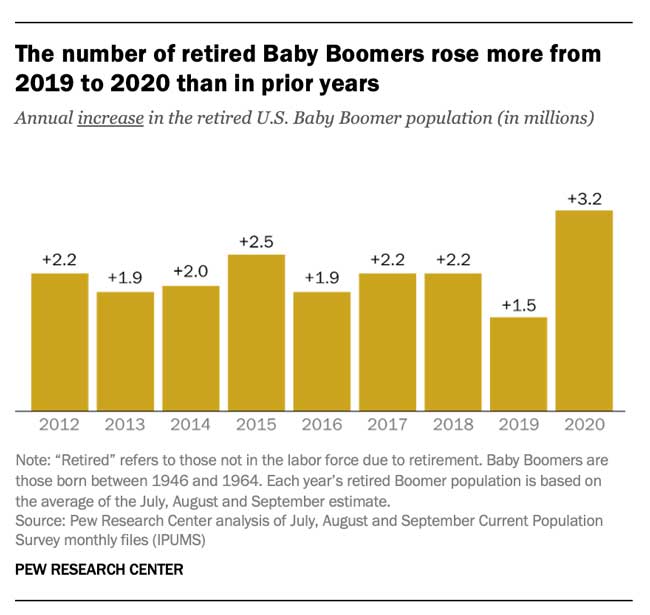NEW YORK—In most years, millions of Baby Boomers retire from the labor force. But in the past year the number of retired Boomers increased more than in prior years, according to a Pew Research Center analysis of monthly labor force data. The recent increase in the share of Boomers who are retired is more pronounced among Hispanic and Asian-American Boomers and those residing in the Northeast.
In the third quarter of 2020, about 28.6 million Baby Boomers—those born between 1946 and 1964—reported that they were out of the labor force due to retirement, according to the Pew Research survey.
This is 3.2 million more Boomers than the 25.4 million who were retired in the same quarter of 2019. Until this year, the overall number of retired Boomers had been growing annually by about 2 million on average since 2011 (the year the oldest Boomer reached age 65), and the largest increase was 2.5 million between the third quarter of 2014 and 2015.
In September, 40 percent of Boomers were retired, up from 39 percent in February. The recent increase in the share of those who have retired has been greater for some demographic groups.
The share of Boomers who have retired differs by educational attainment. Among those with no education beyond high school, the share is up 2 percentage points since February. There has been no change among those with some college education, and for those with a four-year college degree, the share is up 1 point.
The share of Hispanic Boomers reporting they are retired has increased 4 percentage points since February (30 percent to 34 percent). And the retirement rate among Asian Boomers has increased 3 points, from 36 percent to 39 percent. Retirement is up more modestly among White and Black Boomers (1 point for each).
Looking regionally, the movement into retirement appears most prevalent among Boomers residing in the Northeast (35 percent in February and 38 percent in September).
